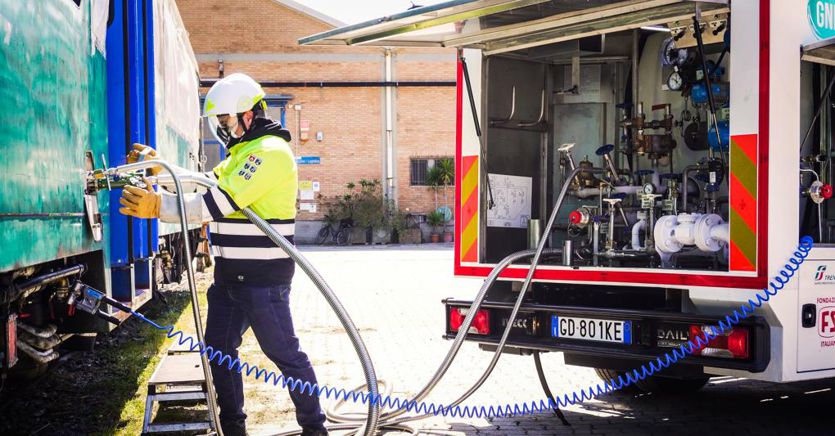A further boost will come from the new industrial plan, expected by the end of February, which will have to support the change of pace already initiated by the group led by Luigi Ferraris. In the meantime, however, Ferrovie dello Stato is determined to accelerate its “green” commitment also thanks to the assistance provided by the Recovery Plan which entrusts FS over 24 billion euros to build, by 2026, a new railway infrastructure and to strengthen, at the same time, the existing one, making it more accessible and digitalised, more resilient to climate change and less impacting from an environmental point of view. A clear turning point, therefore, also and above all in a “green” key, which has already seen, in 2020, about 9 billion euros of investments (5% more than the previous year), of which the 80% destined for the infrastructure, in order to make it sustainable throughout its useful life, and which will be able to count, between now and the next few years, on over 11 billion investments – including resources guaranteed by FS and funds from the NRP – distributed along five axes: network, trains, stations, fixed systems and smart roads.
The effort on the net
The starting point is known: over 12 thousand kilometers of network already electrified out of the almost 17 thousand in total, 72% of the total to reach 83% at the end of 2026, using the support of the PNRR. In this way, Italy will become the country in Europe with the highest percentage of trains that will travel without generating CO2 emissions. In fact, the Recovery program foresees 2.4 billion in investments to allow the peninsula to equip itself with another 1,800 kilometers of electrified grid, of which 573 in the South. To these, another 2.9 billion must be added to implement Ertms (European Rail Traffic Management System) technology, the train command and control apparatus identified as a common European language that promotes interoperability between railway operators, improving performance and safety. . Currently 700 kilometers are equipped with the new system, but the group expects to accelerate the extension of the technology over the entire network to gradually replace the pre-existing signaling systems with fully digital and interoperable technology.
The new face of stations
A second axis then concerns the stations with the group intending to redesign the face of 620 airports (out of a total of 2200) with a particular emphasis on those in the South, to which 700 million euros of the Recovery Plan are destined. Objective: redevelop 54 stations by 2026 to transform them into examples of sustainable architecture with green spaces, internal and external LED lighting, systems for the self-production of renewable energy and installations of remote management systems and equipment. The first construction sites will start shortly and ten stations will have their look redone already by 2024. The change of clothes, as mentioned, will also involve other stopovers around the peninsula and will be marked by a series of interventions that will lead to a savings on global energy consumption of up to 40% per year: latest generation photovoltaic systems, but also heat pumps and solar thermal to ensure self-consumption of energy, and thermoregulation and heat metering systems that will be accompanied by a profound review of waste collection and treatment mechanisms.
The renewal of the fleet
Alongside the strengthening of the network and stations, there is also the fleet renewal plan which saw an important junction last year: 1.18 billion of the approximately 9 put on track by the group involved the restyling of transport both by rail ( passengers and freight) and road. As for the future, Trenitalia will invest 4 billion between now and 2026 to put the new state-of-the-art regional trains into service. These are green and eco-sustainable trains, made up of 97% recyclable material and able to ensure a 30% cut in energy consumption compared to the trains they will replace. Not to mention the further injection guaranteed by the PNRR with a first step that reached the finish line at the end of November, when the Ministry of Infrastructure and Sustainable Mobility approved a decree that assigns Trenitalia 200 million euros for the purchase of new electric trains or hydrogen: 60 million for 7 bimodal trains for the Reggio Calabria-Taranto intercity connections (which will enter service by 31 December 2024) and 140 million for 70 intercity night coaches to and from Sicily (fully operational by 30 June 2026).
The green workshops
Ferrovie also aims to reconvert large train maintenance systems and to reduce the costs of the energy bill by 30% with a mix of solutions. The 60 million plan concerns 20 of the 56 Trenitalia workshops, in addition to the 4 already in operation, which, within the next 3 years, will be home to as many photovoltaic, solar, geothermal and mini wind power plants. All together they will ensure over 13 megawatts of peak power, equal to 40% of Trenitalia’s total energy needs for maintenance. In practice, as much as the consumption of a municipality of 20 thousand inhabitants.
